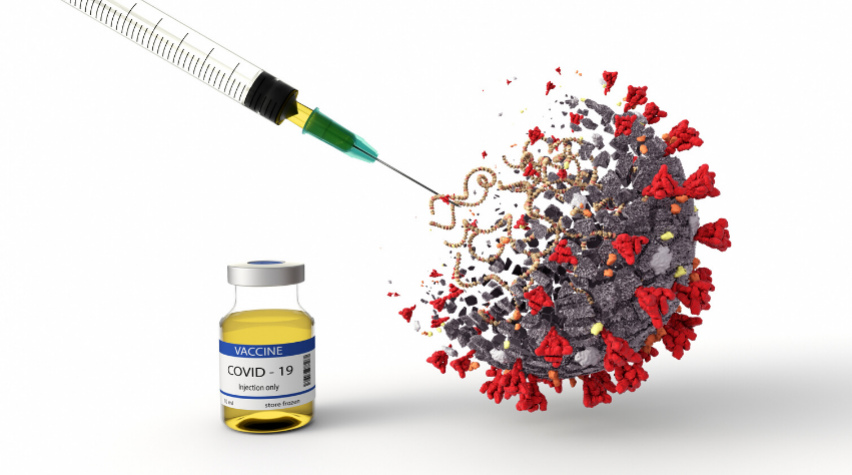
AIChE’s open access journal, Bioengineering & Translational Medicine, has just published online at https://doi.org/10.1002/btm2.10163 "Employing Drug Delivery Strategies to Create Safe and Effective Pharmaceuticals for COVID-19 (Editorial)" by Kevin J. McHugh, Assistant Professor, CPRIT Scholar in Cancer Research, Rice University, Dept. of Bioengineering. This editorial is published as the first article in the May 2020 issue (Volume 5(2)).
Repurposing existing drugs
With a vaccine at least a year away, it may be possible to rapidly repurpose existing drugs to prevent SARS-CoV-2 infections and treat patients already infected with COVID-19, writes Kevin McHugh. More than 40 different drugs are currently being explored for efficacy against COVID-19.
Unfortunately, many of them have side effects that limit their use to the most severe cases and prevent their use as prophylactics. Drug formulation and delivery strategies such as controlled release and targeted delivery could expand the use of such existing drugs.
Many of the drugs being evaluated to treat COVID-19 infection are repurposed small-molecule antivirals and immune-modulating antibodies that are already approved for other indications (e.g., chloroquine, hydroxychloroquine, ribavirin, favipiravir) or in clinical trials but not yet approved by the U.S. Food and Drug Administration (FDA) (e.g., remdesivir, galidesivir, leronlimab). If proven effective, these drugs offer several advantages from a rapid-response perspective, such as the availability of safety data. In addition, several of these drugs offer broad-spectrum activity that makes it more likely they will remain functional even if the SARS-CoV-2 virus mutates.
Thus far, there has been little discussion about using these drugs to prevent the disease from occurring, presumably due to their potential side effects.
PrEP and mitigating side effects
There is precedent for pre-exposure prophylaxis (PrEP) when the side effects of an antiviral are low. If an effective drug for treating COVID-19 with infrequent and/or mild side effects is identified, it may be possible to rapidly transition to evaluating its use for PrEP. However, if that drug does have side effects, perhaps its toxicity could be reduced to make its use as a prophylactic viable.
Drug delivery systems can be used to administer drugs that have promise but are not sufficiently safe in a traditional formulation. A drug delivery system may improve absorption, increase intracellular delivery, maintain drug concentrations within a small therapeutic window, or provide a high concentration gradient between the organ of interest (e.g., lungs) and systemic circulation.
Developing a controlled-release formulation that maintains the minimum effective drug concentration could mitigate side effects by reducing the steady-state drug concentration by as much as eight-fold and reducing the burden on the liver by 81%.
Targeted delivery
Targeted drug delivery may offer a similar or even better ability to reduce toxicity in some cases, particularly for respiratory infections. Because the lungs comprise only about 2% of the total body weight, targeted delivery could reduce the amount of drug required by a factor of fifty or more compared to traditional oral administration. A promising approach is the hitchhiking of drug-loaded nanocarriers on red blood cells — intravenous administration of these constructs improved delivery to the lungs by approximately 40-fold — which could be used to achieve an effective local concentration without requiring a high systemic drug concentration. The preparation of inhalable particles for local delivery is perhaps an even simpler approach.
“On the spectrum of rapid response readiness, the repurposing of existing drugs with broad-spectrum activity and known side effects that can be mitigated with advanced drug-delivery techniques should be a top priority. If we can augment the protection provided by personal protective equipment (PPE) with effective, low-toxicity prophylactics, we may be able to stymie the spread of the disease and maintain a healthcare workforce operating at full capacity when they are most needed,” McHugh says.
Focus of BioTM
Bioengineering & Translational Medicine focuses on ways chemical and biological engineering drive innovations and solutions that impact clinical practice and commercial healthcare products. The journal also highlights scientific and technical breakthroughs currently in the process of clinical and commercial translation.
The entire publication is open access, and all articles can be read online. Read the article discussed here in the current issue of Bioengineering & Translational Medicine for FREE at https://doi.org/10.1002/btm2.10163.


